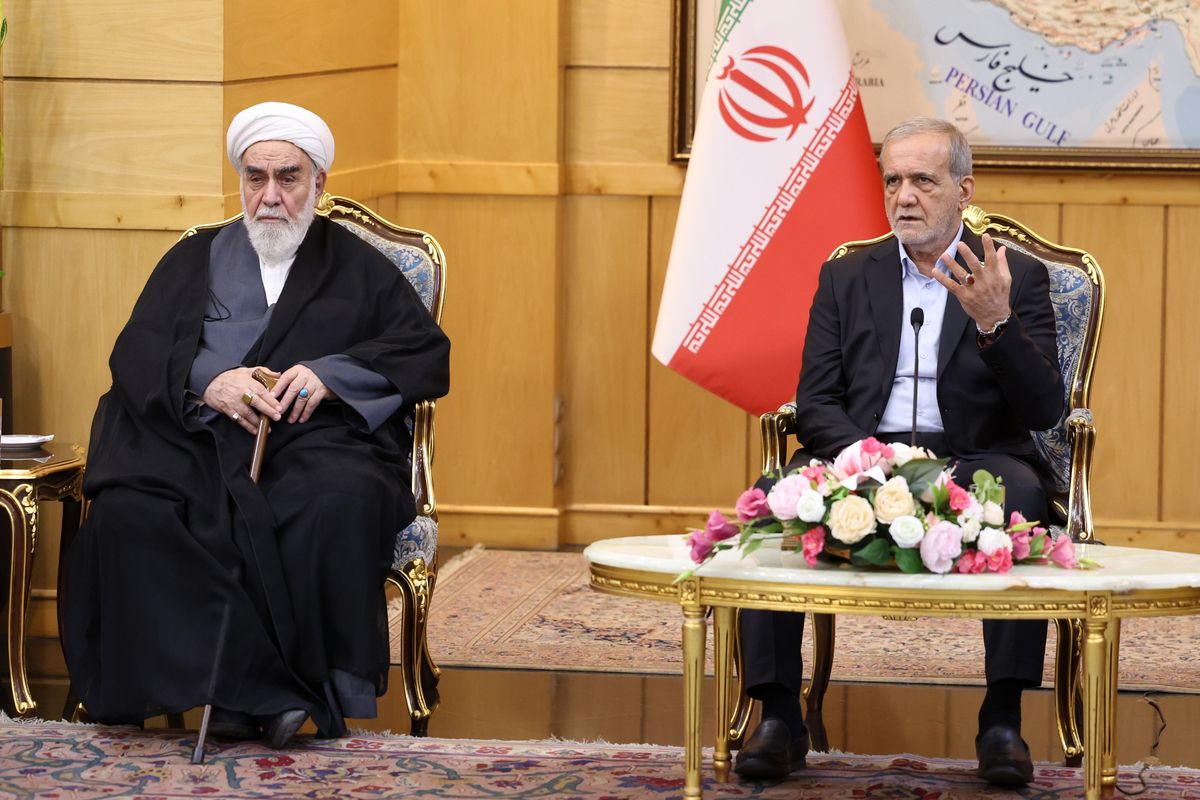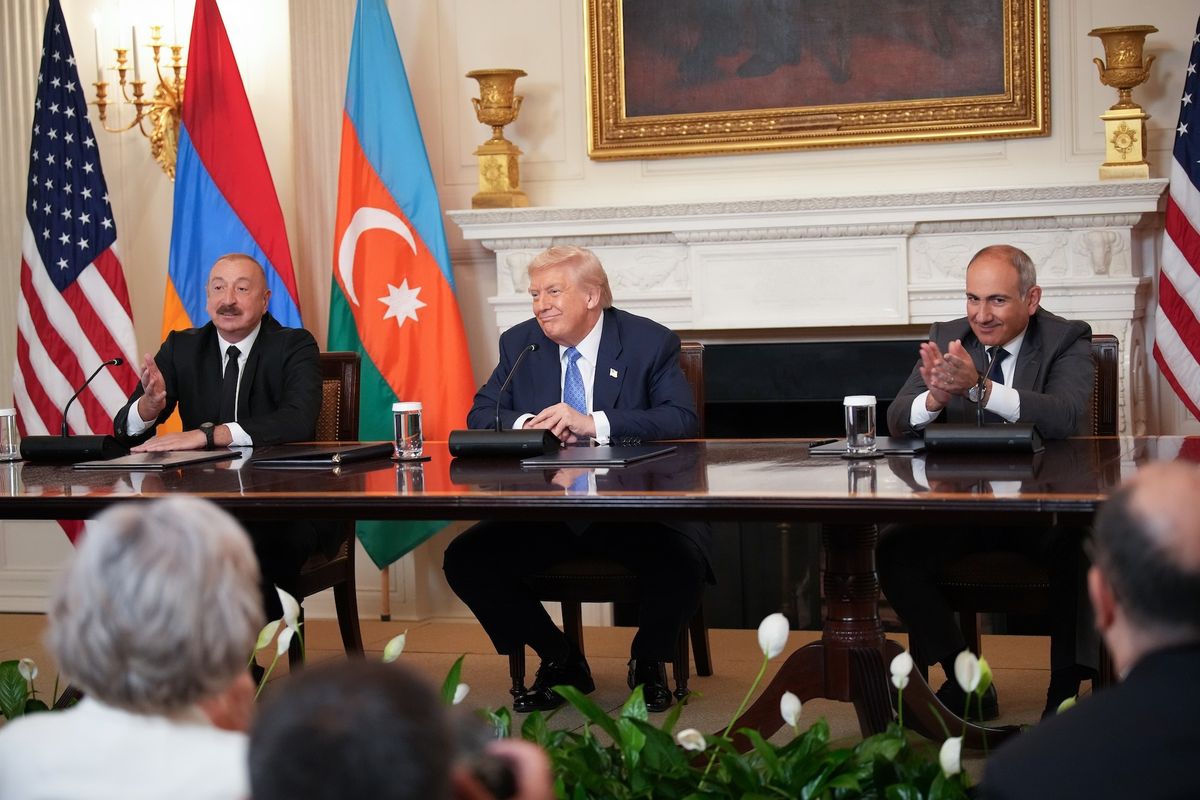John McLaughlin served as the Deputy Director of the Central Intelligence Agency from 2000-2004 and served as Acting Director of the CIA in 2004. He currently serves as a distinguished practitioner in residence at the Johns Hopkins University School of Advanced International Studies.
The current situation between the United States and Iran is complicated, messy, dangerous and can’t be explained in a sound bite summary. So, let’s sort through it with three questions: Where do things stand? How did we get here? Where is this heading?
WHERE THINGS STAND
The U.S. killed Iranian General Qassem Soleimani in a drone strike on Jan. 3. The Trump administration says it had compelling intelligence that Soleimani was preparing “imminent” attacks on some number of American targets in the Middle East. In retaliation, Iran hit two American bases in Iraq with missiles on Jan. 8 (there were no U.S. deaths, but 11 service members were injured). Large demonstrations were held in Iraq, protesting both the killing of Soleimani on Iraqi soil and the use of their country by the U.S. and Iran for a proxy war — this on top of massive Iraqi protests against their own government’s economic performance and corruption.
Iranians turned out in massive numbers to protest Soleimani’s assassination but quickly turned their anger against their own government for the admitted incompetence of its Revolutionary Guard in accidentally shooting down a Ukrainian civilian airliner on Jan. 8 — the same day that Iran hit the American bases with missiles — killing all 176 passengers.
This sequence of events has provoked an argument in Washington over whether the threat cited to justify Soleimani’s killing was truly imminent. The administration says yes, but many in Congress say briefings on this were unpersuasive. This is a semantic argument, made more misleading because the commentary isn’t coming from the intelligence community but from policy officials who are unaccustomed to characterizing intelligence judgments and prone to stress whatever buttresses their political case.
I have not seen the intelligence, but I know from experience that it is sometimes possible for the reporting of planned attacks to be very compelling, pointing to “imminence”, even without specificity of time, target or method. In a sense, that is the story of 9/11. Our reporting back then gave us high confidence that a big attack was coming — and the CIA warned the Bush administration — but we were unable to nail down key details. To be sure, Trump’s policies heightened the climate of distrust and hostility in which Soleimani flourished, but the administration may well have had intelligence sufficient to persuade them not to risk inaction. Whether killing Soleimani was the most effective response — as opposed to hardening potential U.S. targets and going after his operatives — is a separate question. And that’s a whole other debate I hope the administration had.
HOW DID WE GET HERE?
In the broadest sense, this is an outgrowth of decades of hostility between Tehran and Washington going back to Iran’s seizure of U.S. Embassy hostages in 1979. More narrowly, this latest flare-up is traceable to Trump’s withdrawal from the nuclear agreement with Iran and his imposition of harsh economic sanctions. The administration’s goal has never been clear — a more restrictive agreement, regime change or something else, but what it got was Iranian retaliation that took both countries right up the escalatory ladder with no strategy on either side for climbing down … or prevailing.
Some Trump critics claim he is also indirectly responsible for Iran’s shooting down of the civilian airliner, insofar as his policies helped create the “fog of war” — that mixture of suspicion, confusion and unplanned occurrences that takes conflict in directions no one anticipated. That is probably going too far, although my own experience with multiple wars is this: When violence begins, you never know where it’s going. If someone says they do, don’t believe it. As renowned Prussian military strategist Carl von Clausewitz taught us, war inevitably involves an interplay between rational behavior, emotion and chance — a fancy way of saying expect surprises and accidents. Iran’s downing of the Ukrainian airliner fits that model.
WHERE IS THIS HEADING?
Prediction is perilous in any situation this chaotic. But the greatest concern has to be that it escalates into all-out war between the U.S. and Iran — one that would be hard to contain and very likely would pull in other countries in the Middle East. While clearly possible because of the surprise potential already discussed, this is an outcome that neither side wants, and which would only come about through accident or miscalculation — neither of which can be predicted or dismissed.
More likely is a kind of volatile stalemate, with Iran continuing to harass the U.S. via covert attacks. Trump meanwhile has no incentive to reduce the painful sanctions he imposed after pulling out of the nuclear agreement and would likely tighten them in response to further Iranian provocations. Expect continued tension and tit for tat lower-level violence between the two sides going forward; worry about the absence of channels for de-escalation.
Meanwhile, a number of specific issues will bear watching for their potential effect on the larger picture. If Iran follows through on its threat to abandon the nuclear agreement, it could in a matter of months be back on the threshold of nuclear weapons — something that would alarm its neighbors and might push others to go nuclear (the Saudis in particular).
Another wild card is the protest taking place in Iran against the government’s incompetence in downing the civilian airliner. This has cut more deeply than previous protests — drawing surprising support from journalists in state media outlets — but Western analysts tend to underrate the regime’s ability to stifle protest. My guess is they will succeed again, so don’t expect internally driven regime change.
Finally, there is the U.S. scuffle with Iraq over the presence of American troops there. Iraqi Prime Minister Adel Abdul-Mahdi asked Washington to prepare a withdrawal plan. So far, the Trump administration is refusing and threatening to deny Iraq access to some of its funds in U.S. banks. If Washington does end up withdrawing, this, combined with the drawdowns in Syria and one probably coming in Afghanistan, would seriously dent U.S. counterterrorism capability in the Middle East.
Former CIA Deputy Director John McLaughlin is a Cipher Brief Expert. His column, under the headline ‘Iran Will Retaliate in Wake of Soleimani’s Killing’ first appeared in Ozy.
Read more expert national security insights in The Cipher Brief and sign up for our free newsletter here or become a member, with full access to all of our expert-driven content for just $10 a month for an annual subscription.
If you have a professional interest in national and global security, request your seat at the table at the U.S.’ premiere, apolitical conference on national security issues, The Cipher Brief Threat Conference March 22-24 in Sea Island, GA. Engage with experts, government officials and business leaders for in-person briefings on critical national security issues facing both government and business. Seats are limited. Request your conference pass today.














